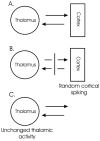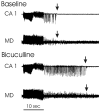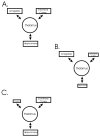Temporal lobe epilepsy: where do the seizures really begin?
- PMID: 18848643
- PMCID: PMC2913468
- DOI: 10.1016/j.yebeh.2008.09.017
Temporal lobe epilepsy: where do the seizures really begin?
Abstract
Defining precisely the site of seizure onset has important implications for our understanding of the pathophysiology of temporal lobe epilepsy, as well as for the surgical treatment of the disorder. Removal of the limbic areas of the medial temporal lobe has led to a high rate of seizure control, but the relatively large number of patients for whom seizure control is incomplete, as well as the low rate of surgical cure, suggests that the focus extends beyond the usual limits of surgical resection. Reevaluation of the extent of the pathology, as well as new data from animal models, suggests that the seizure focus extends, at least in some cases, beyond the hippocampus and amygdala, which are usually removed at the time of surgery. In this review, we examine current information about the pathology and physiology of mesial temporal lobe epilepsy syndrome, with special emphasis on the distribution of the changes and patterns of seizure onset. We then propose a hypothesis for the nature of the seizure focus in this disorder and discuss its clinical implications, with the ultimate goal of improving surgical outcomes and developing nonsurgical therapies that may improve seizure control.
Figures





References
-
- Margerison JH, Corsellis JAN. Epilepsy and the temporal lobes. A clinical, electroencephalographic and neuropathological study of the brain in epilepsy, with particular reference to the temporal lobes. Brain. 1966;89:499–530. - PubMed
-
- Avoli M, Gloor P. Interaction of cortex and thalamus in spike and wave discharges of feline generalized penicillin epilepsy. Exp Neurol. 1982;76:196–217. - PubMed
-
- Steriade M. Sleep, epilepsy and thalamic reticular inhibitory neurons. Trends Neurosci. 2005;28:317–324. - PubMed
-
- Bertram EH, Zhang DX, Mangan P, Fountain N, Rempe D. Functional anatomy of limbic epilepsy: a proposal for central synchronization of a diffusely hyperexcitable network. Epilepsy Res. 1998;32:194–205. - PubMed
Publication types
MeSH terms
Grants and funding
LinkOut - more resources
Full Text Sources
Medical

